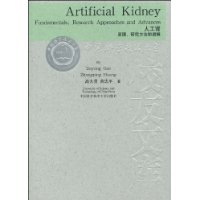本书系统介绍了人工肾的起源、结构系统、工作原理及发展前景,详细论述了多种人工肾数理模型和计算机模拟优化方法,并运用大量实例阐述了人工肾实验研究方法。本书适合生物医学工程、临床医学、血液透析、膜科学、传热传质、化工领域的学生、教师以及研究人员阅读,可作为相应课程的教学参考书及新型人工肾研发的实用手册。
插图:

In addition, the mortality rate of ESRD patients in the United Statesremains higher than those reported in other industrialized nations such asEurope and Japan. Between the year 1982 and 1987, Japan had a 61%unadjusted five-year survival of ESRD patients, Europe had a 59%unadjusted five-year survival of ESRD patients, and the United Statesonly had 40% unadjusted five-year survival of ESRD patients. Whenadjusted for age and proportion of patients with diabetic nephropathy,the adjusted five-year survival of ESRD patients in the United Statesremained lower than that in Europe, followed by Japan. The adjustedrelative risk of mortality for ESRD patients in United States was 1.33compared to the ESRD patients in Japan and was 1.15 compared to theESRD patients in Europe (Held et al. 1990). It has also been reportedthat the mortality rates of ESRD patients undergoing dialysis therapy inthe United States were 25% to 50% higher than those in Japan andEurope (Friedman 1996).
In the year 1991, the gross mortality rate per 100 patient-years forthe ESRD patients in the United States was 28.7 compared to 13.0 for theESRD patients in Italy who started renal replacement therapy in 1986 and1987 respectively. The unadjusted relative risk of mortality for the ESRDpatients in Italy was 0. 439 compared to those in the United States. Whenadjusted for age, gender, diabetic status, comorbid conditions, andtreatment modality; the adjusted one-year, two-year, and five-yearsurvivals for the ESRD patients in the United States were 84. 4%,67. 0%, and 33.4% respectively, and those for the ESRD patients in Italywere 88.3%, 75.9%, and 45.9% respectively. The adjusted relative riskof mortality for the ESRD patients in Italy was 29% lower than that forthe ESRD patients in the United States (Marcelli et al. 1996).

